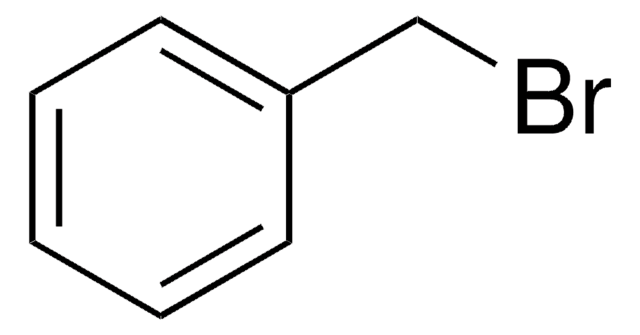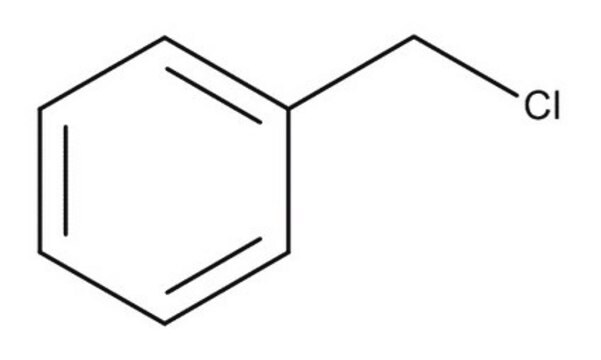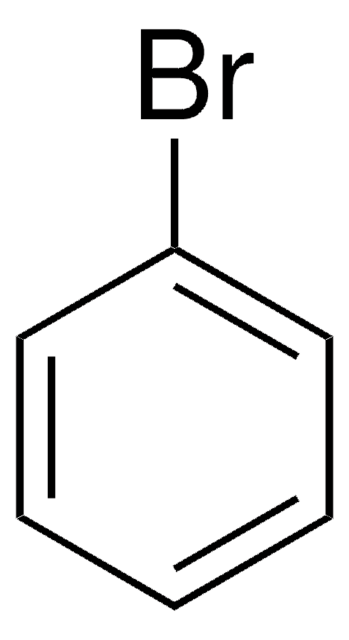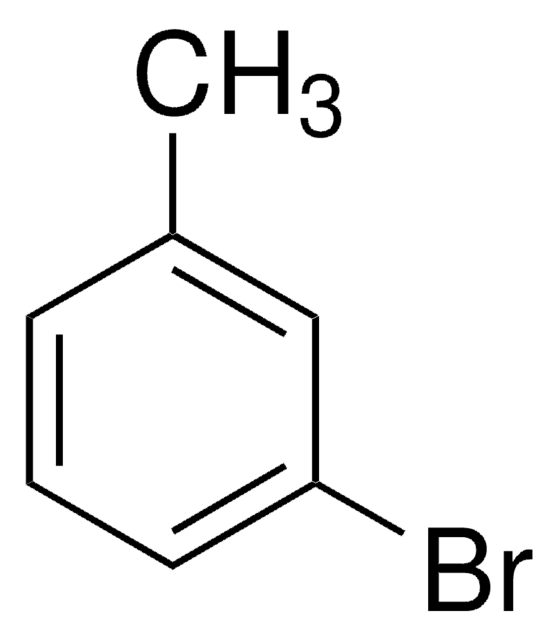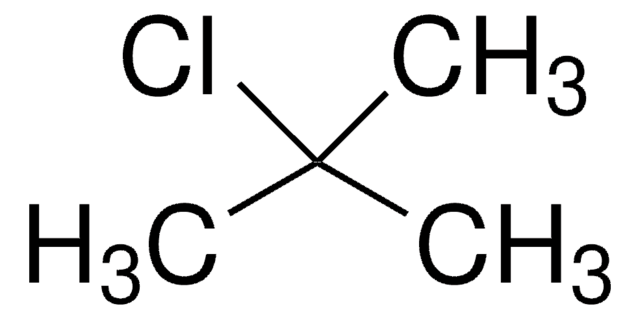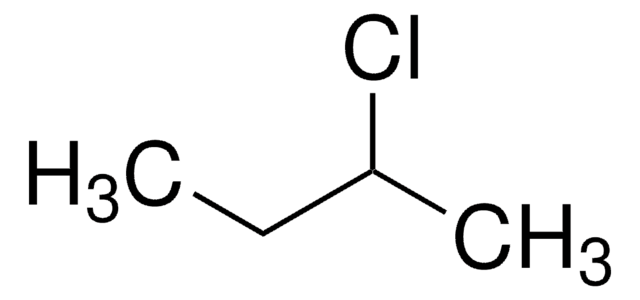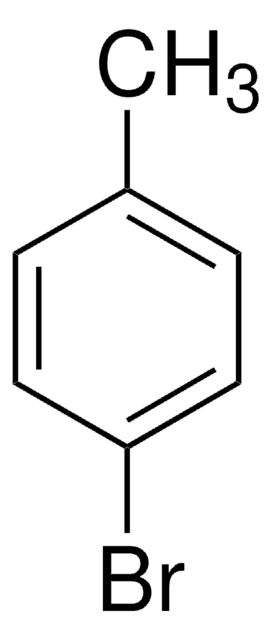Wichtige Dokumente
185558
Benzylchlorid
ReagentPlus®, 99%, contains ≤1% propylene oxide as stabilizer
Synonym(e):
α-Chlortoluol
About This Item
Empfohlene Produkte
Dampfdichte
4.36 (vs air)
Qualitätsniveau
Dampfdruck
10.3 mmHg ( 60 °C)
7 mmHg ( 55 °C)
Produktlinie
ReagentPlus®
Assay
99%
Form
liquid
Selbstzündungstemp.
1085 °F
Enthält
≤1% propylene oxide as stabilizer
Expl.-Gr.
14 %
Brechungsindex
n20/D 1.538 (lit.)
bp
177-181 °C (lit.)
mp (Schmelzpunkt)
−43 °C (lit.)
Löslichkeit
0.46 g/L at 30 °C (Decomposes in contact with water)
Dichte
1.1 g/mL at 25 °C (lit.)
Funktionelle Gruppe
chloro
phenyl
SMILES String
ClCc1ccccc1
InChI
1S/C7H7Cl/c8-6-7-4-2-1-3-5-7/h1-5H,6H2
InChIKey
KCXMKQUNVWSEMD-UHFFFAOYSA-N
Suchen Sie nach ähnlichen Produkten? Aufrufen Leitfaden zum Produktvergleich
Verwandte Kategorien
Allgemeine Beschreibung
Anwendung
- A benzylating agent for the benzylation of benzene and other aromatic compounds.
- A reactant for the preparation of 4-methoxydiphenylmethane by Friedel-Crafts alkylation with anisole.
It can also be used to introduce the benzyl protecting group to alcohols and carboxylic acids by forming corresponding benzyl ether, and benzyl ester, respectively.
Rechtliche Hinweise
Signalwort
Danger
Gefahreneinstufungen
Acute Tox. 3 Inhalation - Acute Tox. 4 Oral - Carc. 1B - Eye Dam. 1 - Muta. 1B - Skin Irrit. 2 - Skin Sens. 1 - STOT RE 2 Oral - STOT SE 3
Zielorgane
Heart,forestomach, Respiratory system
Lagerklassenschlüssel
6.1A - Combustible acute toxic Cat. 1 and 2 / very toxic hazardous materials
WGK
WGK 3
Flammpunkt (°F)
152.6 °F - closed cup
Flammpunkt (°C)
67 °C - closed cup
Persönliche Schutzausrüstung
Eyeshields, Faceshields, Gloves, type ABEK (EN14387) respirator filter
Hier finden Sie alle aktuellen Versionen:
Besitzen Sie dieses Produkt bereits?
In der Dokumentenbibliothek finden Sie die Dokumentation zu den Produkten, die Sie kürzlich erworben haben.
Kunden haben sich ebenfalls angesehen
Unser Team von Wissenschaftlern verfügt über Erfahrung in allen Forschungsbereichen einschließlich Life Science, Materialwissenschaften, chemischer Synthese, Chromatographie, Analytik und vielen mehr..
Setzen Sie sich mit dem technischen Dienst in Verbindung.